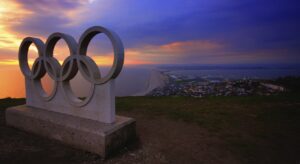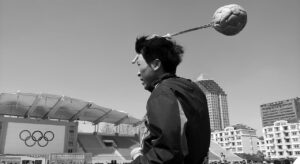In the early period of Roman history, the royal period (6th-11th-VIth centuries B.C.), the patrimonial community, in which numerous tribes (Latins, Sabines, Etruscans) lived, gradually decayed and patriarchal-slavery relations emerged. The chiefs were still at the head of the clan, but the patrician nobility was already gaining strength and the number of poor plebeians was increasing. The upbringing of children and young men at this time was in the family. Girls remained under the supervision of their mothers, while boys and young men, under the guidance of their fathers, practiced physical exercises and games and learned to wield weapons. Roman education had a practical military orientation. The generic aristocracy took part in horseback riding, chariot races, dart throwing, etc. Particularly popular were the Trojan horsemen’s games, galloping through the intricate passages of the labyrinth. These games were usually attended by patrician warriors, who formed the cavalry detachments.
In republican Rome (VI-Ibb. B.C.) the division of society, the accumulation of wealth by some and the impoverishment of others continued. Because of the growth of slavery and frequent wars, the system of education of the ruling The system of upbringing for the ruling classes was designed in accordance with the tasks of strengthening the Roman army. However, the peculiarities of economic and political development and peculiarities of the military organization of slave-holding Rome determined the formation of methods and forms of physical education that differed from Greek. In Roman schools (elementary, grammar and rhetorical) there was no physical education. The rich and noble Romans traditionally preferred to give their children physical training at home.
A typical representative of Roman enlightenment in III-II B.C. is Cato the Elder, who created a system of home education. Cato himself taught his son to read and write, explained to him the laws of life, and taught him gymnastics. He taught the boy to wield weapons, to throw a spear and a dart, to ride, to fight with his fists, taught him to endure cold and hunger, taught him to swim and cross rivers in the place where there were whirlpools and fast currents. By the age of 17, his son was prepared for the rigors of military service.
During the republican period, the system of military and physical training of the Romans was closely related to the social organization of society. The population of Rome was divided into five classes according to their property status.
The first two classes formed the elite military formations: cavalry and heavy-armed troops on chariots. Representatives of the third and fourth classes were armed with spears, swords and shields. Warriors who belonged to the lowest, fifth, class had only a sling.
Military physical training was also carried out in the troops. Roman education was not like that of the Greeks. The education before the age of 16 was still carried out in the family, where the father was the chief instructor. The main means of physical education were: exercises in running, throwing weights, wrestling, fencing, horseback riding exercises, ball games.
At the age of 17, Roman youths joined the army and completed their military training there.
In the Roman army the young men went through a harsh school of military physical education. F. Engels in his work “The Army” noted that the Romans created “…an even more focused than the Spartan system of training each soldier … The training of the warrior was very severe and calculated to develop in him in every possible way physical strength. In addition to regular training with weapons and various movements, running, long jumping and pole vaulting, rock climbing, wrestling, swimming – first without clothes, then with all the equipment… And not only new recruits, but also veteran legionnaires had to perform these exercises in order to maintain physical vigor and agility and to be accustomed to tedious activities and hardships.” Such a compulsory and state-controlled system existed until a professional Roman army was established. From the end of the second century B.C., when mercenaries began to serve in the army, this system began to lose importance. However, the wealthy Roman youth continued to engage in physical exercise and games. The Field of Mars in Rome was reserved for military exercises and gymnastics. Here they played ball, raced, and threw darts and discs. But in their content and character these exercises had nothing in common with the traditions of ancient Greece.
The Romans made attempts to transfer to Roman soil the gymnastic agonies of the Greeks. So, the Roman Consul Sulla ordered to move the 175th Olympic Games (80 BC) from Greece to Rome. This scheme was not a success. The Greek agonies were alien to the Roman people in spirit, form and tradition.
In republican Rome, games and spectacles of a military-applied nature became popular.
These included: The Tarquinia Games, founded by Tarquinius the Proud in 510 BC, were held every five years, their program included competitions of copies.



